What is stock and broth?
Stock or broth is a liquid food preparation that forms the base for many soups, stews, and sauces. Stock can be prepared from raw ingredients such as bones, vegetables, herbs, and spices. It adds flavor and depth to recipes and serves as a basis for many dishes like risotto and stews. Broth is usually more highly seasoned than stock and slightly thinner; it typically uses only meats or vegetables for its base instead of bones. The slow cooking of the stock reduces water content resulting in a concentration of flavors and an intense aroma. Stocks are essential components in healthful cooking – they are rich in gelatin which helps form the foundation of great sauces or gravies.
What are the benefits of making your own stock or broth?
Making your own stock or broth has many benefits, both nutritional and economical. Nutritional benefits include the control you have over the quality of ingredients used in the stock or broth, such as only using organic, grass-fed beef bones or sourcing sustainably caught fish. Furthermore, when making your own stocks and broths you are able to use much less salt than store-bought versions, therefore consuming fewer preservatives. Economically speaking, making stock or broth provides savings when considering that around half of the cost is typically meat and vegetables which can be repurposed into other meals. This is the perfect way to reduce waste by saving and freezing leftover bones from rotisserie chicken, pork butts, steaks, even shrimp and crab shells! Additionally, investing in a high-quality stock pot and strainer can go a long way in saving time spent weeding out undesirable ingredients as with store-bought versions.
The Method
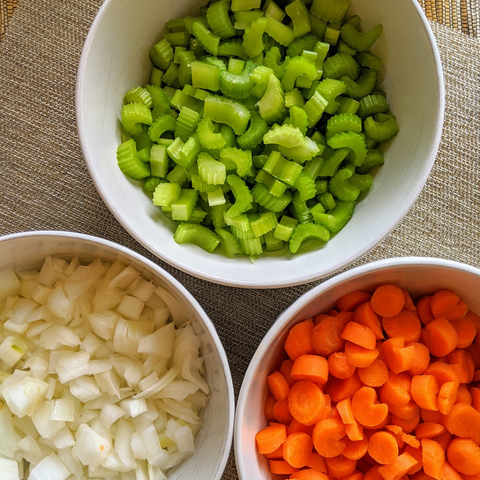
How to make a vegetable stock
The most basic version of vegetable stock only requires a few simple ingredients, such as carrots, celery, onions, and garlic. Most recipes will also recommend adding mushrooms, parsley, thyme, bay leaves, peppercorns, and salt for additional flavor. The best part about making vegetable stock is that you can customize it based on what you have in your pantry and your own taste preferences.
Once you’ve gathered all of your ingredients, the first step to making vegetable stock is to chop up the vegetables and seasonings. It’s a good idea to cut the vegetables in small pieces so that more flavor can be extracted from them during the cooking process. If you don’t want to spend a lot of time chopping, you can use pre-cut vegetables from the store.
Once the vegetables are prepared, the next step is to add all of the ingredients to a large pot and fill it with enough cold water to just cover the vegetables. The stock should then be simmered for about an hour or two, depending on how concentrated you want the flavor. During this time, you should skim off any foam that may form on the surface of the liquid and discard it. Finally, season the broth to taste. Add a tablespoon or two of Lane's SPG Rub or your favorite seasoning and taste it before adding any more. You can also add a few tablespoons of vinegar for an extra tangy flavor.
Once the broth has simmered for two hours, strain it through a cheesecloth or a fine-mesh sieve. Finally, let the broth cool for 20-30 minutes before transferring it to glass jars or other containers for storage.
How to make a meat based stock/broth
The first step is to select the bones. Keeping a variety of bones on hand is ideal, but any specific type can be used. You can use bones from a variety of sources, including, but not limited to, chicken, beef, lamb, pork, or fish. For best results, it is recommended to choose bones with some meat still attached. The number of bones you use will be determined by the size of the pot, but a pound or two should be enough.
Once the bones have been selected, the next step is to roast them. Roasting for 20-30 minutes at a temperature over 400 degrees will help develop more flavor and also will help to draw out any impurities from the bones. Same rules apply for vegetables and seasonings from the vegetable stock method above. It’s best to add the seasonings after the bones have simmered for at least 1-2 hours.
The next step is to cook the broth. Make sure to cover the bones and vegetables with a sufficient amount of cold water and bring it to a boil. Be sure to monitor the simmer and reduce the heat to the lowest setting when necessary. The bones and vegetables should simmer for several hours in order to extract the most flavor and health benefits from the broth. A minimum of 2-4 hours is recommended, but it can simmer for up to 24 hours.
Finally, strain the broth through a fine-mesh strainer. Discard the bones and seasonings, and save the broth. The liquid can be used immediately, or it can be refrigerated or frozen for later use. Enjoy your homemade bone broth in soups, stews, sauces, or any recipe of your choice.
Additional Tips and Tricks
- We want the SMOKE - Instead of just roasting your bones and vegetables, if you have the ability, use your smoker or charcoal grill to impart even more flavor while still getting the roasted flavors.
- A moment of CLARITY - Invest in cheesecloth for this process. It's inexpensive and found in most mega-marts and grocery stores. The more you are able to filter out of the final product, the better your long term storage options will fare.
- There when you NEED it - If you have some old school ice trays, freeze leftover stock/broth in the ice trays and store the cubes in a quality freezer bag for long term storage that will keep for up to 6 months. When you need some, just toss a few cubes in a pot on the stove or even in the microwave for a couple of minutes and you're ready to go!
- Make stock in an INSTANT - All the same rules apply from above, but use an old school pressure cooker or electric version to cut the cook time down to as little as 45 minutes.
Recap
Here at Lane's, our mission is to help bring people together around delicious food, and making stock and broth at home is a great way to get the whole family involved and spend quality time together while enjoying fresh, natural flavors in your meals. Taking the time to understand the basics of making it will pay off with delicious, homemade stocks. With just a few simple steps, you can make healthful and flavorful broths with ingredients you can trust.



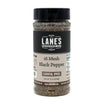


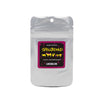






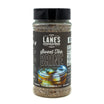
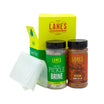


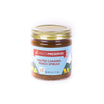











Leave a comment
All comments are moderated before being published.
This site is protected by hCaptcha and the hCaptcha Privacy Policy and Terms of Service apply.